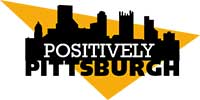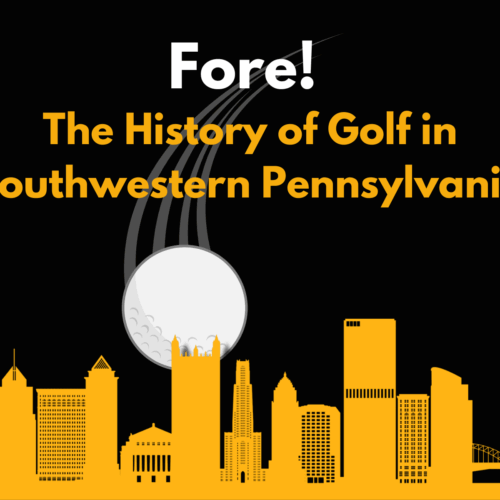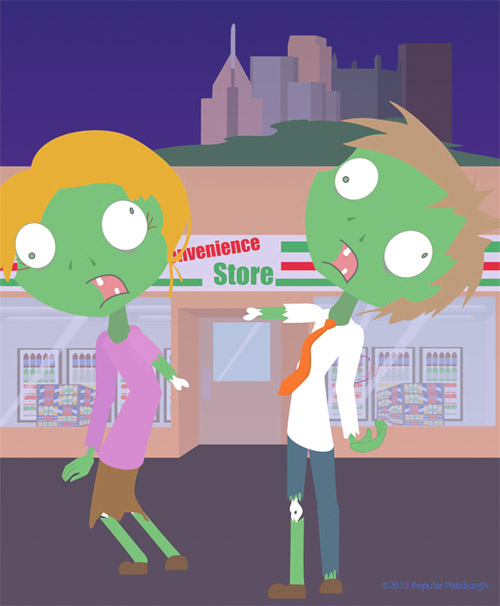
Pittsburgh Zombies
February 11, 2015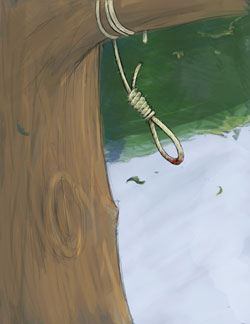
Dead Man’s Hollow
February 11, 2015 Pittsburgh is known to Americans as the home of champion sports franchises, including the Pittsburgh Steelers, Pittsburgh Penguins, and Pittsburgh Pirates. Of course, in Pittsburgh world renowned sports teams are just the start. Innovative Pittsburghers have crafted everything from the steel for the Brooklyn Bridge to a famous sandwich that brings with it a true taste of Pittsburgh. Let us take a look at a small sample of the many cool and famous things made in Pittsburgh.
Pittsburgh is known to Americans as the home of champion sports franchises, including the Pittsburgh Steelers, Pittsburgh Penguins, and Pittsburgh Pirates. Of course, in Pittsburgh world renowned sports teams are just the start. Innovative Pittsburghers have crafted everything from the steel for the Brooklyn Bridge to a famous sandwich that brings with it a true taste of Pittsburgh. Let us take a look at a small sample of the many cool and famous things made in Pittsburgh.
Pittsburgh Steel
A common nickname for Pittsburgh is the Steel City. At one time Pittsburgh was known the world over for the steel and glass it seemed to produce in endless supply. We were the steel making capital of the world and our steel built the Brooklyn Bridge, the George Washington Bridge, the Chrysler Building, and the Empire State Building. Pittsburgh’s forging mills hammered out the 70-ton axle used in George Ferris’ world-famous 2,000 passenger wheel at the 1893 Chicago World’s Fair as well as the Panama Canal’s 110-foot-high lock gates. 
The steel industry attracted immigrant workers because it paid well despite the fact that the work was hot, grueling, and dangerous. Environmentally, the industry left the city in a state of fog and dust. We were the Smokey City, instead of today’s more metropolitan City of Bridges.
After nearly 100 years, the steel industry came to a close in the 1980s and many workers were left unemployed or working for a foreign company. The loss for Pittsburgh was catastrophic. Nevertheless, Pittsburgh’s championship spirit showed through, and our beautiful city now thrives as a center of healthcare, education, technology, robotics, and financial services.

Pittsburgh Glass
Before steel making filled the sky with the dark clouds of early 20th century industry, Pittsburgh was creating glass. As early as the 1820s Pittsburgh was a major distributor of glass products. Pittsburgh glass was used for globes that lit the nation’s streets, windows for homes, and jars for food. Being located along three rivers, Pittsburgh made good use of the waterways. It all started with three immigrants: Albert Gallatin, James O’Hara, and Benjamin Bakewell. By the Civil War, Pittsburgh’s glass trade was a $7 million business with 20 bottle and vial factories, 23 window glass factories, 22 flint glass factories, and a number of glass producers devoted exclusively to the production of chimneys. Invention was the key to Pittsburgh’s success in glass manufacturing. Over 100 patents were secured by Pittsburgh’s glassmakers.
Pittsburgh Nuclear
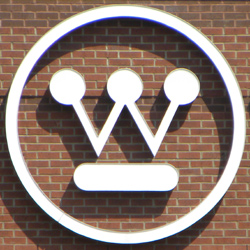 Pittsburgh continued to be ahead of the curve in 1953 when George Westinghouse and his company, Westinghouse Electric Company, provided a prototype engine to power the world’s first nuclear submarine, the U.S.S. Nautilus. By 1957 Westinghouse was providing the world’s first pressurized water reactor nuclear power plant. Westinghouse has more than 11,000 employees in more than 15 countries that supply over 40 percent of the world’s operating commercial nuclear plants.
Pittsburgh continued to be ahead of the curve in 1953 when George Westinghouse and his company, Westinghouse Electric Company, provided a prototype engine to power the world’s first nuclear submarine, the U.S.S. Nautilus. By 1957 Westinghouse was providing the world’s first pressurized water reactor nuclear power plant. Westinghouse has more than 11,000 employees in more than 15 countries that supply over 40 percent of the world’s operating commercial nuclear plants.
Other Westinghouse inventions include household appliances such as the first automatic washing machine. Today the company continues to offer a wide range of services and products to the world.
Pittsburgh Foods
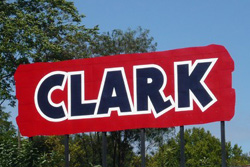 Pittsburgh has its share of success in the food industry. Henry John Heinz created the H.J. Heinz Company, synonymous today with its famous ketchup. Based in Pittsburgh since 1869, the Heinz Company sells over 650 million bottles of ketchup per year. Heinz is the most global of food serving companies in the country. Its core products include ketchup, sauces, meals, snacks, and infant nutrition.
Pittsburgh has its share of success in the food industry. Henry John Heinz created the H.J. Heinz Company, synonymous today with its famous ketchup. Based in Pittsburgh since 1869, the Heinz Company sells over 650 million bottles of ketchup per year. Heinz is the most global of food serving companies in the country. Its core products include ketchup, sauces, meals, snacks, and infant nutrition.
Another famous taste of Pittsburgh is the Clark Bar. The Clark candy bar was invented by Irish immigrant D. L. Clark in Pittsburgh in 1917. It was originally sold for five cents and became extremely popular with U.S. soldiers during World War I. The candy bar became the first successful “combination” candy bar, combining a caramel core surrounded by crispy ground peanuts and covered with a thin veil of chocolate. The candy was developed to send to troops serving in World War I. From 1911 until 1983 the candy bar was produced at a manufacturing facility on Martindale Street on Pittsburgh’s North Side. Sadly, the Clark bar was sold to the Leaf Candy Company in O’Hara Township in the 1980s and changed hands again when the New England Confectionery Company, manufacturer of Necco wafers, purchased the recipe and production equipment to make Clark bars. The bar lost its caramel center during this time. But finding them to purchase at all was still difficult.
The slogan for the Clark candy bar was, “I want a Clark bar.” Though you may have wanted a Clark bar, often you weren’t able to get the confection. When the manufacturing of the Clark bar left the area, the only reminder of the city’s candy-producing past was the Clark bar sign atop its former production facility on the North Side.
In late 2018, the Boyer Candy Co. from Altoona, Pennsylvania, makers of Mallo Cups, purchased the Clark bar recipe and candy-making machines from New England Confectionery after they closed. At the time Boyer had plans to make Clark candy bars once again in Pennsylvania. It took some time but soon Pittsburghers will, once again, be able to enjoy a “real” Clark bar. The D. L. Clark Company was created in 1886 and was a leader in the candy business. Financial difficulties forced the company to sell to NECCO in 1999.
 Pittsburgh food cannot be a subject of conversation without mentioning the Primanti Brother’s sandwich. It is the most famous meal between slices of bread in Pittsburgh. (Well, many argue The Cheese Steak is their most famous sandwich.) From a Jumbo & Cheese to Black Angus Steak Sirloin, many Primanti Brother’s sandwiches are topped with a special preparation of French fries and coleslaw. It all started in the Great Depression at a lunch cart in the Strip District that later turned into a restaurant owned by Joe Primanti and his nephew John. The business has expanded to the suburbs of Pittsburgh with 14 restaurants and two others in Florida. A Primanti Brothers’ sandwich is a true taste of Pittsburgh.
Pittsburgh food cannot be a subject of conversation without mentioning the Primanti Brother’s sandwich. It is the most famous meal between slices of bread in Pittsburgh. (Well, many argue The Cheese Steak is their most famous sandwich.) From a Jumbo & Cheese to Black Angus Steak Sirloin, many Primanti Brother’s sandwiches are topped with a special preparation of French fries and coleslaw. It all started in the Great Depression at a lunch cart in the Strip District that later turned into a restaurant owned by Joe Primanti and his nephew John. The business has expanded to the suburbs of Pittsburgh with 14 restaurants and two others in Florida. A Primanti Brothers’ sandwich is a true taste of Pittsburgh.
Pittsburgh Media
 Pittsburgh also is a leader in the media front. On November 2, 1920, four pioneers made their way to a makeshift studio on top of the Westinghouse Building in East Pittsburgh. A switch was flipped and they started reporting election returns in the Harding/Cox Presidential race. KDKA, the first broadcasting station in the world, was born.
Pittsburgh also is a leader in the media front. On November 2, 1920, four pioneers made their way to a makeshift studio on top of the Westinghouse Building in East Pittsburgh. A switch was flipped and they started reporting election returns in the Harding/Cox Presidential race. KDKA, the first broadcasting station in the world, was born.
Dr. Frank Conrad, Assistant Chief Engineer of Pittsburgh’s Westinghouse Electric Company, first became interested in radio eight years earlier. Conrad started building a transmitter, which was housed on the second floor of his garage in Wilkinsburg. The first official record of this station, licensed 8XK, appeared on the August 1, 1916, edition of the Radio Service Bulletin. Station 8XK was the precursor to KDKA Radio.
Pittsburgh is also the birthplace of WQED-TV, which went on the air on April 1, 1954. WQED was the first community-supported television station in the United States. In 1967, WQED welcomed Fred Rogers, the host of “Mister Rogers’ Neighborhood” for more than three decades. Rogers was born in 1928 in nearby Latrobe, PA.
More Pittsburgh Firsts
Pittsburgh’s many impressive “firsts” make ours a very special city. 
- When emailing friends or co-workers, think about the fact that the emoticon Smiley 🙂 was created by Carnegie Mellon University computer scientist Scott Fahlman in 1982.
- The first Mr. Yuk sticker was created by Children’s Hospital of Pittsburgh in 1971 after research indicated that a new symbol was needed to identify poison other than skull and cross bones.
- Alcoa developed the first pull-tab on cans in 1962 and created the first aluminum-faced skyscraper in 1953.
- The world’s first retractable dome was created in 1961 as the covering of the Civic Arena.
- The first gas station in the nation was opened at Baum Boulevard and St. Clair Street in East Liberty in 1913.
- The first movie theater in the world was opened by Harry Davis on Smithfield Street in 1905.
Having Fun Led to a lot of Pittsburgh “Firsts”
 George Washington Gale Ferris invented the first Ferris Wheel in 1892. It was over 264 feet high and was capable of carrying more than 2,000 passengers at a time.
George Washington Gale Ferris invented the first Ferris Wheel in 1892. It was over 264 feet high and was capable of carrying more than 2,000 passengers at a time.
The first Bingo game was invented here in the early 1920s. Hugh J. Ward came up with the concept and began running it at local carnivals. He secured the copyright and wrote the book of rules in 1933.
The first true baseball stadium was built in Pittsburgh in 1909 and was named Forbes Field. Soon other stadiums followed, but it was Pittsburgh that held the first World Series between the Pittsburgh Pirates and the Boston Americans.
Other Interesting Pittsburgh Firsts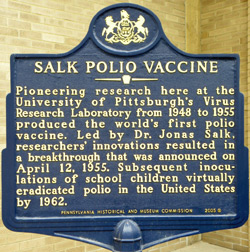
Other interesting “firsts” include the first polio vaccine in 1953, developed by Dr. Jonas E. Salk at the University of Pittsburgh; the first Zippo lighter was invented here by George G. Blaisdell in 1932; and the nation’s first daylight savings plan was devised in Pittsburgh by councilman Robert Garland in 1918.
Who could imagine that so many of the things we take for granted today, all across the country, and even around the world, came from Pittsburgh? It makes you wonder what lies in the future for this great city. Pittsburgh may be a city of bridges and of steel, but it is also a town of world famous “firsts.”

